Moss Gardening in Japanese Gardens
As an Amazon Associate I earn from qualifying purchases.
Other links on this site may lead to other companies that I’m associated with.
You wouldn’t usually think of moss and lichen as ground covers when planning a xeric garden, but they’re both amazingly drought tolerant.
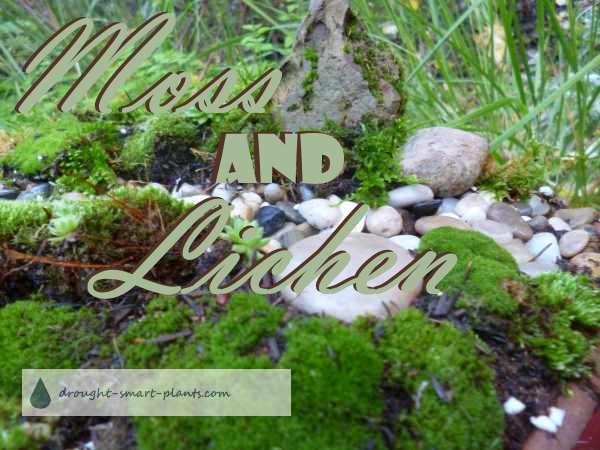
Many species of moss and lichen have survived unchanged for eons, filling a perfect niche.
Though primitive, the fact that they have not changed indicates that they are perfect the way they are; they’re capable of adapting but have no need to.
They naturally occur on rocks and logs in the forest, and even in urban environments.
When you think about it, what’s the difference between a cliff in the wilderness, and a building in the city?
As primitive survivors, these kind of plants have figured out how to make a living in the most inhospitable places.
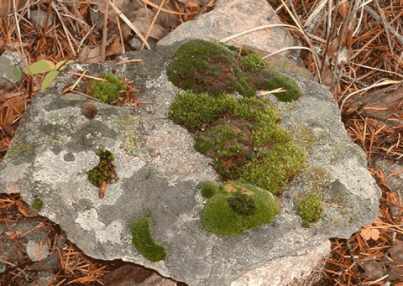
There are a myriad textures, sizes and growth patterns of moss and lichen. They obviously fill the same niche, but they don’t compete, instead harmoniously occupying the same habitat.
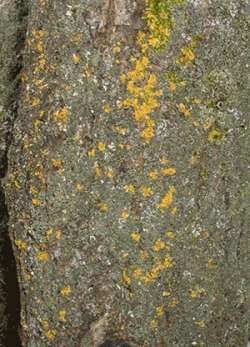
Mother Nature’s palette includes sage green, forest green,
gold, grey, brown and in some cases, orange.
The naming of mosses and lichens can be quite entertaining – common names of mosses range from the merely descriptive;
Fire Moss – to downright fanciful; Electrified Cat’s-Tail Moss.
Other names with the power to evoke an image are:
Knight’s Plume
Pipecleaner Moss
Red Stemmed Feather Moss
If you’re interested in more, check out the book called Plants of Northern British Columbia by Mackinnon, Pojar and Coupe, published by Lone Pine Publishing, ISBN 1-55105-015-3.
Moss and Lichen Growing Tips
To encourage the growth of existing moss and lichen, spray your rocks, hypertufa planters, stone lanterns and any other garden items with a mixture of buttermilk (this can either be liquid, or the dry powder, reconstituted with water) and sheep manure.
I make this in a plastic container then screen it to take out large bits.
Spray it on with a spray bottle.
If you can do this two or three times a year, you’ll have amazing results.
To increase moss quickly, put pieces into a blender (not one you want to use for margaritas!) with some buttermilk and blend it to a slurry.
Drizzle or paint the mixture on your garden objects, bird houses trough gardens or dish gardens. Results can vary, but you should start to see tiny green moss growing within a week or two.
Keeping it sprayed with water until it’s established will help it along.
Moss Dish Gardens
As a child, I loved making little fairy gardens, using moss for the base, and houses out of bark, with flat stones for a path.
Now I’m a little more sophisticated, but still get the same enjoyment out of making moss gardens. The best type of soil to use if you’re making a dish garden is sandy or clay type soil mixed with finely pulverized sheep or steer manure.
I use a screen over the bottom holes, and place the dish gardens in a shady spot. They rarely need watering; if they dry out too much the moss goes dormant, then when rains come again, magically, it’s green and healthy looking within twenty four hours.
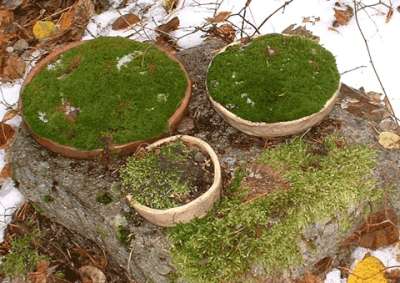
Moss and lichens only require a place to grow without interference, a small amount of moisture (even mist or fog will do), and a tiny amount of soil or debris, or in the case of many lichens, a rock (or concrete) face.
They can grow in such inhospitable environments as the arctic, and high mountain tops where the growing season is measured in days, not months. Moss will prefer being in the shade, but lichens grow in full sun.
An Asian Theme Garden
Ancient Chinese gardeners developed a classic art form called ‘pen-jing’ which means landscape.
Usually, one or more beautiful rocks are placed in a shallow dish of sand which is raked to simulate the waves on a lake, and small plants can be placed on the rock. It’s acceptable to use tiny figures, boats, bridges and the like to give a sense of scale to the display.
This one is built on a glass coffee table and uses driftwood and lichen covered rocks to evoke an island in a lake.
Bonsai or bowl gardening was perfected by the Japanese, and it’s still very popular today. Moss is the preferred ground cover for bonsai pots with their miniature trees.
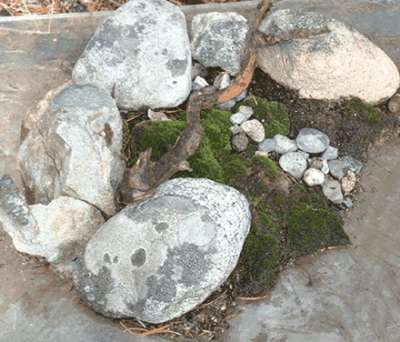
Moss is also valued by Japanese gardeners for creating beautiful paths in shade gardens in combination with ferns and other shade loving plants.
Boulders with lichen on them are also revered and venerated. Some lichens can reach great age, growing for centuries miraculously on rock surfaces alone.
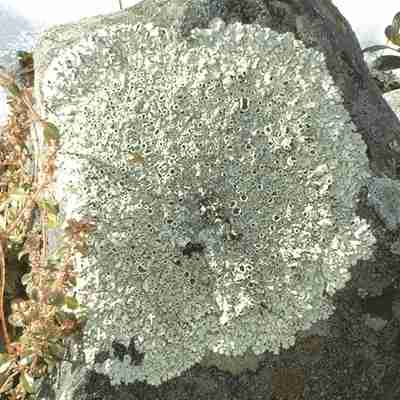
Utilizing these beautiful and unusual plant forms can give a whole new dimension to your xeriscaping.
Watch for locally occurring species in your area, and beg, borrow or buy some for your xeric garden.
Once you start seeing the potential for using mosses and lichen, you’ll want to see more of them.

